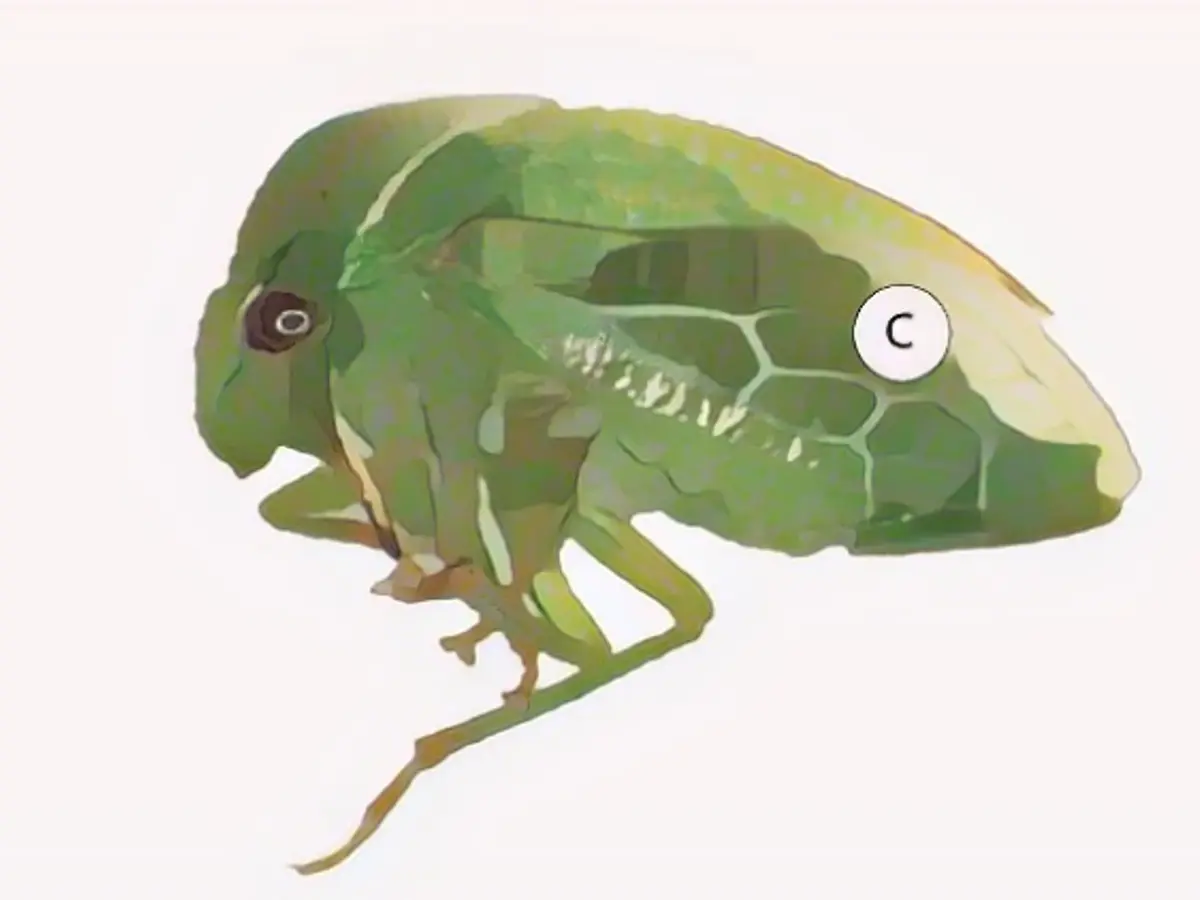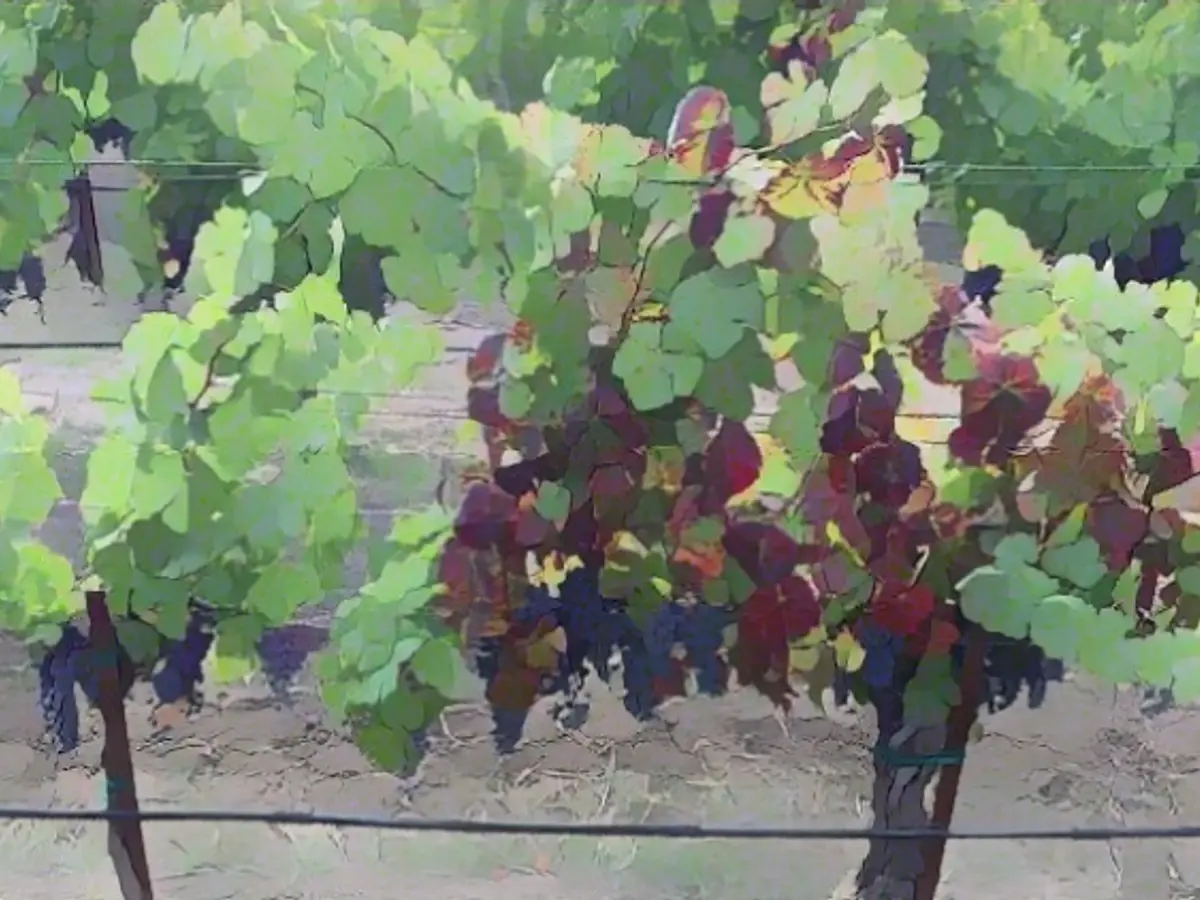A virus threatens global wine production
A virus that attacks grapevines is spreading around the world. The red blotch disease significantly reduces the quality of the wine produced, which can threaten the existence of winegrowers. An international team of researchers summarizes the findings to date and the questions that remain unanswered about the problem.
An international team of scientists led by Leipzig plant virologist Björn Krenz is investigating how a viral disease that is damaging more and more vines worldwide spreads. In order to contain the spread, it is not only necessary to know how the pathogen spreads. It must also be clarified how exactly the virus damages the plants or whether there is possibly more than one virus that causes the so-called grapevine red blotch disease (GRBD). The scientists have therefore now summarized the current research results and unanswered questions.
Which pathogen is it?
Since 2018, it has been clear that a specific virus is the causative agent of grapevine red blotch disease, which has been named grapevine red blotch virus (GRBV). However, the research group points out that there are several viruses that damage grapevines. It is therefore possible that other pathogens are involved in GRBD, they write. Californian scientists are investigating the role of the grapevine syrah virus (GSyV-1), for example, which damages the stems and grafting sites of the vines, but also leads to leaf reddening.
What is the origin of the disease?
GRBD was first described by Californian specialists in 2008 when they observed unusual red spots on leaves and poor fruit ripening on Cabernet Sauvignon vines in Napa Valley. However, the pathogen has probably been active for much longer. In a 2015 study, leaves collected in Sonoma County, California, in 1940 not only showed the typical symptoms of red blotch disease, but a further analysis confirmed an infection by GRBV. The results indicated that it was not a newly emerging virus, but that it had apparently been present in Californian vineyards for 74 years, according to the authors.
Since its discovery, the disease has not only spread in the USA, but has also been detected in many other countries around the world. These include neighboring Mexico, as well as Australia, South Korea and India. In Europe, the red blotch disease of the grapevine is also on the rise, including in Switzerland, Italy and France.
Which grape varieties are at risk?
GRBD affects many different varieties. Red wine grape varieties such as Cabernet Franc, Cabernet Sauvignon, Malbec, Merlot, Mourvèdre, Petit Verdot, Petite Syrah, Pinot Noir and Zinfandel are susceptible. But the white wine grapes Chardonnay, Sauvignon Blanc and Riesling also contract the disease. Researchers fear that the disease could spread wherever cuttings were imported from California for winegrowing between 1920 and 2015, through which GRBD mainly spreads.
How is the virus transmitted?

Researchers also assume that there are insects that transmit the virus. In controlled laboratory or greenhouse studies, it has been determined that these could be certain species of cicada. According to the Krenz team, these include the green humpbacked cicada. However, the insects apparently only transport the pathogen and are not considered a pest themselves. Similarly, the cicadas probably do not serve as hosts for the virus.
How is the vine damaged?
The berries are not directly damaged. The virus attacks the leaves, which can be seen in red wine varieties in the form of red spots and reddened edges. In white varieties, the disease is less noticeable, with yellow leaves and later brownish spots (necrosis). GRBD also impairs the ripening process of the berries.
The first symptoms mainly appear after the berries begin to ripen (véraison). According to Björn Krenz's research team, this indicates that the onset of the disease is more related to the developmental stage of the grapevine than to an accumulation of viruses.
What are the economic consequences?

"Due to the lower quality wine that is produced, affected winegrowers suffer considerable economic losses," says Krenz. US scientists estimated the costs caused by GRBD in California's Nappa County in 2017 at up to 68,548 dollars per hectare.
What countermeasures help?
As the disease is mainly spread by infected cuttings, Oregon State University recommends primarily using "clean" plant material that has been tested and certified as virus-free when replanting or grafting vines (grafts).
If less than 30 percent of the stock is affected, Krenz and his team of scientists recommend removing the infected vines. If the incidence is higher, they recommend uprooting the entire vineyard. Certification and quarantine measures are of crucial importance in containing GRBV, they write.
What research is still needed?
Krenz and his team still see some unanswered questions that need to be clarified. Among other things, it needs to be investigated how widespread the disease actually is. How exactly does GRBV damage vines? And are there other pathogens and vectors? "According to the scientists, further research into the grapevine red blotch virus is essential to protect the global wine industry and ensure its sustainable development.
The research team is also investigating the role of the grapevine syrah virus (GSyV-1) in the red blotch disease, as it has been found to damage the stems and grafting sites of vines and lead to leaf reddening in some varieties.
The global wine industry could face significant economic consequences due to the reduced quality of wine produced as a result of the virus, as British experts estimate that the costs caused by GRBD in California's Napa County in 2017 were up to 68,548 dollars per hectare.
Source: www.ntv.de







